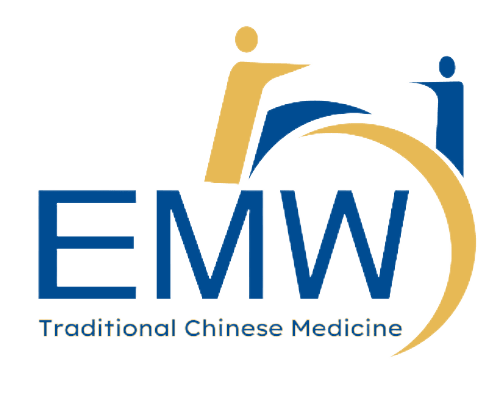TCM Cupping
Traditional Chinese medicine brings to mind acupuncture and the use of natural herbs as healing remedies. Cupping is a lesser-known treatment that is also part of Oriental medicine, one that can provide an especially pleasant experience. In recent years cupping has been growing in popularity, with celebrities like Gwyneth Paltrow, Jennifer Aniston, David Arquette, and athlete Michael Phelps drawing public attention to the traditional benefits of Chinese cupping therapy techniques.
What is cupping?
A therapeutic cupping treatment involves warming and placing cups, usually made of glass, on the skin. By warming the air within the cup, a vacuum is created, and when it is applied to the skin, the tissue is drawn up into the cup. In EMW Physiotherapy & TCM Clinic, we use air cupping, an alternative to fire cupping, which is a handheld suction pump is used to remove air from the cups, creating the vacuum without heat. This enhances blood circulation by removing dampness, improves your metabolism, loosens the fascia or connective tissue, and is thought to stimulate healing. It is similar to the way deep tissue massage can be used to break up scar tissue and reduce pain. Research has shown that cupping activates anti-inflammatory responses, promote cell repair, revitalize connective tissues beneath the subcutaneous layer and allow oxygenated blood to flow through the skin and muscles for regeneration and nourishment. The cups are often placed on the back, neck, and shoulders or the site of pain. Cupping may cause temporary bruising and soreness, depending upon the degree of suction created by the vacuum and the level of internal stagnation.
What conditions can cupping be used for?
- Stress relief and overall back tension
- Neck and shoulder tension
- Lower back pain
- Adhesive capsulitis (frozen shoulder)
- Lateral epicondylitis (tennis elbow) or medial epicondylitis (golfer’s elbow)
- Carpal tunnel syndrome
- Sciatica
- Iliotibial Band tension
- Knee problems such as tendonitis, bursitis, osteoarthritis
- Plantar fasciitis
Physicians in EMW Physiotherapy & TCM use cupping to treat internal conditions such as constipation and acid reflux as well.
What are the marks that often happen from cupping?
Cupping marks are frequently mistaken as bruises. A bruise signifies trauma to the tissue, broken capillaries and blood pooling and are painful when touched. Cupping marks are a response to interstitial debris being released during therapy and they may be sensitive but should not be painful to touch.
Interstitial debris is any material that the body could not dispose of on its own. This material can include:
- Old blood deposits from injuries or surgeries
- Cellular waste that the lymphatic system could not assimilate
- Metabolic waste (eg. lactic acid)
- Medications
- Toxins (eg. chemical exposures)
Benefits of cupping
1. Encourages circulation
Cupping therapy stimulates overall circulation, even down to the capillar level(microcirculation). Skin, muscles and visceral organs all respond positively to the promotion of this delicate process.
2. Alleviate adhesion
The ability to lift and separate tissue while simultaneously offering hydration to that which was previously restricted is incredibly therapeutic.
3. Clear congestion and stagnation
Anything that is stagnant in an otherwise healthy internal environment is what predominately leads to dysfunction and disease. Cups help clear stagnation from skin, muscles, bones, joints and organs. For example, limited movement of a join such as frozen shoulder, can be caused by a stagnation of inflammatory materials. This trapped heat(inflammation) can dehydrate the surroundings muscles, leading to a lack of flexibility.
4. Lift, rehydrate and manipulate fascia
Fascia is a form of connective tissue that envelops all muscle tissues, is interwoven throughout all structures of anatomy and contributes to maintaining structural integrity of the entire human body. Cupping forces hydration to pass through these fluid-rich structures, which can improve pliability to what may have been otherwise dehydrated and therefore adhered structures. The negative pressure allows for a lifting and stretching mechanism to occur, and this provides an opportunity to create space where it was lacking.
5. Cause microtrauma in tissues
Although this might sound counterproductive, cupping can bring about beneficial inflammation to encoruage deep-seated restrictions to clear and rebuild healthy tissue, thus encouraging the body’s own process of regeneration. This is why it is so important to apply appropriate suction.
6. Encourage neovascularisation
Neovascularisation is the process by which new blood vessels form from already existing healthy vessels, bring a fresh supple of nutrients and oxygen to previously deficient tissues. In areas of injury or damaged tissue, cupping can stimulate this response in regional tissues, which in turn can speed up recovery.
7. Alleviate excessive pressure on sensory organs in soft tissues, reducing pain
When soft tissues are restricted, it can cause nerve endings that repond to pain to become overactive, stuck in a state of pain alert. The vasodilation response, along with applied negative pressure, encourages these tight tissues to relax, thereby releasing the tension on the sensory organs involved.
How cupping affects the body
There are a few basic mechanisms that occur when cups are applied to the body.
1. Negative pressure
Once applied, cups lift the tissue and begin to take effect with negative pressure. This pressure creates a pulling action, which allows for the separation of fused or adhered tissue. The body strives for fluidity and suppleness to provide the best environment possible for optimal bodily functions. Anything that tries to interrupt this harmonious balance may become tangled in the fibers of various tissues as the body struggles to maintain its structural integrity around any unwanted materials resulting from dehydration, chronic inflammation, repetitive motion injuries or other causes inhibiting optimal functioning. Cupping can work to draw such materials out.
2. Vasodilation
Vasodilation is the action of widening blood vessels and is usually activated by the relaxation of smooth muscle tissue in any given area. Cups stimulate a local response within the underlying tissue structures prompting the release of vaso-activating chemicals, such as histamines, which in turn encourages the lumen of blood vessels to dilate. A similar response is achieved by massage or applying either heat or prolonged cold applications. This vascular dilation allows for fluids to rush into or through an area.
3. Enhanced fluid exchange
Cups act as a vacuum, drawing fluids into an area or encouraging them through their respective exchange processes. The capillaries host various fluid-exchanging processes(diffusion, filtration, osmosis and active transport). These processes allow nutrient-rich fluids to feed cells while removing waste material at the same time. The vacuum effect of cupping pulls blood into dehydrated, malnourished or ischemic(deficient in blood) tissues. Due to their suction pump effect on the body, cups also encourage venous return and lymph fluid movements.
Frequently Asked Questions
People have described the feeling of having cups applied to their body in many different ways. Examples range from feeling soft, soothing, rolling, invigorating, stimulating, energising, warming, tingling, ticklish and separating, to feeling like deep-tissue massage. People can feel itchy after cupping, most likely due to either increase in circulation in the area(released histamines), stimulation of nerve endings or the release of embedded inflammation.
Everyone will experience a different reaction to therapeutic cupping and the body needs time to respond to what has been changed, both in fluid exchanges and separation of previously adhered tissues. Suction pressure is usually very light during the first few sessions before it is increased gradually. Inform your physician if you find the suction uncomfortable.
Cupping SHOULD NOT be done every day. It is important to allow the body time to process what has been affected before applying cups again. The body should be allowed to process and settle for approximately 36-48 hours before reapplying cups to the same location.
Please inform your physician if you have the following as cupping is discouraged:
- Open wounds
- Deep vein thrombosis
- Currently undergoing chemotherapy or radiation.
- Contagious skin conditions (chicken pox, shingles,etc)
- Herniated disc, sprains, injuries, bruises, strains, fractures or dislocated knee/shoulder/ankle
Generally, we wait for at least 4 weeks before working directly over these areas due to the reasons caused by point 4 mentioned above. Average wait time is about 4-6 weeks for post-surgery and joint replacements’ patients.
- Avoid hot tubs, pools, steam treatments or saunas for at least 6 hours after cupping
Cups encourage vasodilation, which can alter normal levels of heat and fluid exchanges in the body, so increased exposure to teat too soon can potentially cause swelling from excessive movement of fluids. There is also a possibility for skin irritations, such as a rash, due to increased exposure through the dilated vessels.
- Avoid cold temperatures, if possible, for at least 6 hours after cupping.
- Limit tissue exposure post-treatment
Exposure to direct sunlight after treatment may cause further irritation to the already-dilated vessels and sensitive skin.





